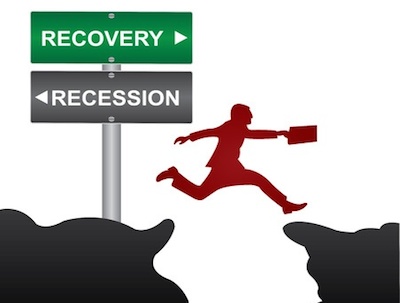The third revision of the first quarter of 2015’s Gross Domestic Product was released today and it showed that the economy did slightly better than was reported in the ‘second’ revision. The U.S. economy still shrank in the first quarter (contracting 0.2%), just less than initially reported. Corporate profits declined $110 billion in the first quarter. This is almost 4 times larger than the $30 billion decline that occurred in the fourth quarter of 2014. Corporate profits are also a good indicator of economic growth.
The Federal Reserve continues to say that they believe economic growth will pick up and that there are encouraging signs of a rebound. Yet in their last meeting they reduced their full year GDP estimate from 2.5% to 1.9%. So how can they say the economy is doing well on the one hand and significantly cut their estimates on the other?
 The Federal Reserve must spur optimism in the economy in order to foster confidence. If confidence in the overall economy (and/or their ability to manage it) is lost, consumers and investors could become even more cautious. Cautious consumers don’t buy large amounts of stuff. Cautious consumers don’t buy new cars or refrigerators or remodel their kitchens. Instead, they hunker down financially. They spend less and try to pay down their credit cards; they increase their savings for the rainy days they see ahead. In other words, the Federal Reserve must present an air of confidence that they know what they are doing and that the economy is in recovery and everything is fine.
The Federal Reserve must spur optimism in the economy in order to foster confidence. If confidence in the overall economy (and/or their ability to manage it) is lost, consumers and investors could become even more cautious. Cautious consumers don’t buy large amounts of stuff. Cautious consumers don’t buy new cars or refrigerators or remodel their kitchens. Instead, they hunker down financially. They spend less and try to pay down their credit cards; they increase their savings for the rainy days they see ahead. In other words, the Federal Reserve must present an air of confidence that they know what they are doing and that the economy is in recovery and everything is fine.
If that confidence in their ability to ‘manage’ the economy begins to waiver, the economy could quickly fall into recession.
So what is the big deal about having a recession? The problem is that with interest rates at zero already, the Federal Reserve doesn’t have the monetary tools it needs to try to spur economic growth to get us out of the recession. To say that differently, the tools they have been using the last 6-7 years have only created sub-par growth. GDP growth isn’t anywhere near the targeted 3-4% range. Doing more of the same isn’t likely to produce different results.
Further complicating the situation is that demographic tailwinds that have existed the last 30 or so years are now turning into headwinds. As a population ages, it consumes less whereas those who are young and just starting families tend to consume more. The Baby Boomers created a never-before-seen consumption wave that led, in part, to the largest and longest Bull stock market in the history of the U.S. stock market. That trend is now fading and it is likely that the average longer-term annual returns of 7-8% will too.
Major economies worldwide have been stimulating their economies for years trying to regain the glory days of growth. So far, they haven’t been very successful and are now mired in mountains of debt. The debt alone represents a further drag on economic growth that will take years and years to unwind.
The core issue is that the problems faced by our economy cannot be solved by monetary policy alone. We need structural changes that will remove the shackles that have held back the entrepreneurial forces that are still alive and well in our country.
In the meantime, those interested in the direction of interest rates need to pay closer attention to the changes in the Fed’s growth estimates, inflation numbers and the unemployment rate. These numbers represent the ‘data’ associated with their data dependency. And the data points to the Federal Reserve keeping interest rates lower for longer than Wall Street currently expects. As I mentioned in my last market commentary, 11 of 17 Wall Street analysts are still projecting that the Fed will raise rates in September. 5 of the 17 think it will raise rates before the end of the year. Only one thinks they won’t raise rates this year.
This divergence between what the Fed is doing to their own estimates and the consensus of Wall Street analysts represents an opportunity. If the Fed does remain lower for longer it will create an environment where bonds and select stock sectors can do well.
The battle in the markets between higher or lower interest rates continues to be played out on a daily basis worldwide and it is normal that volatility is higher at these inflection/transition points. With stocks trading at or near all-time highs and with bonds trading near 5 month lows, I continue to expect higher overall returns in U.S. Treasury Bonds versus stocks for 2015.
Twitter: @JeffVoudrie
Any opinions expressed herein are solely those of the author, and do not in any way represent the views or opinions of any other person or entity.








